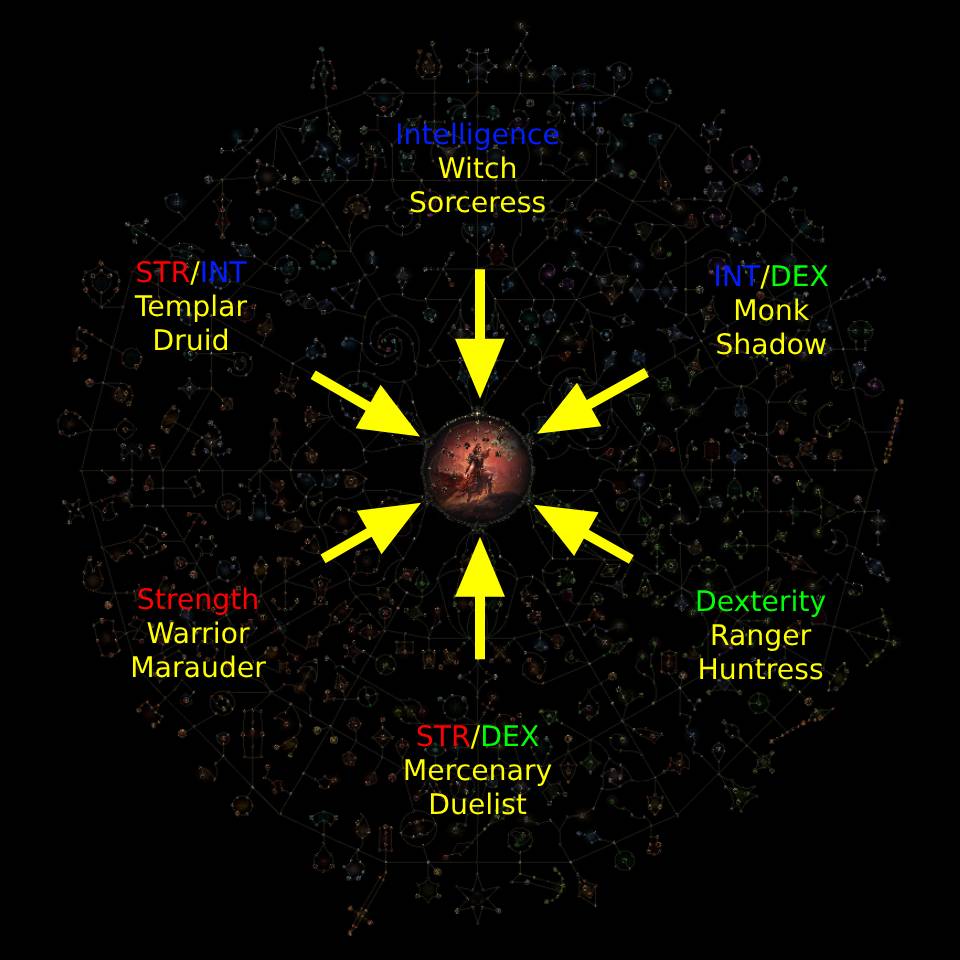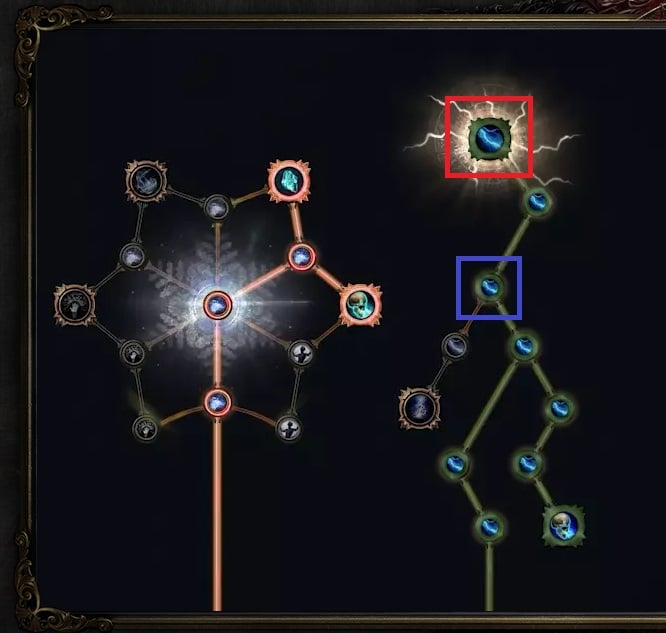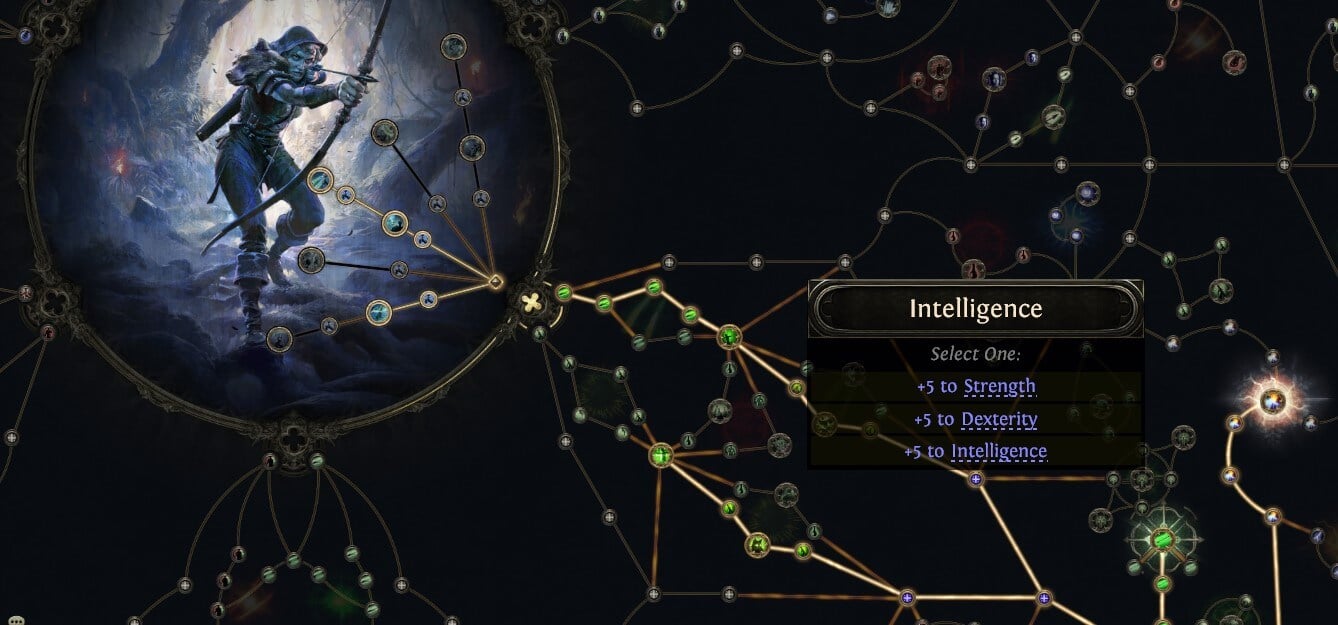The Passive Tree in Path of Exile 2 is extremely daunting at a first glance, but today’s guide will help to simplify it and make it less scary by helping you to understand it on a foundational level and know which Passive Points to take.
To start off, one important concept to understand is that of Attributes. In Path of Exile 2, we have Strength (Red), Dexterity (Green), and Intelligence (Blue). These attributes generally align with certain types of skills - Strength for more heavy hitting, melee attacks, Dexterity for faster forms of ranged combat, and Intelligence for more spell-based, or summoning style skills.
Let’s have a look at the Passive Skill Tree. Bear in mind that this is an extremely simplified, beginner-focused guide to introduce the concept of the Passive Tree to new players.
Passive Tree

Looks absolutely crazy right? Both PoE and PoE 2 feature well over 1000 different passive points to choose from, which allows players to expertly craft creative builds quite freely. A character is granted 1 Passive Skill Point every time they level up, and are sometimes granted more from completing certain quests - and don’t worry, you can change points around by spending Gold at The Hooded One but respeccing isn’t as cheap as it is in other ARPGs. With that out of the way, let’s break this down:
Attribute Areas
The above image is a rough overview of how the Passive Tree is segmented by Passive and Attribute type. In extremely simple terms:
Intelligence Section (Top)
Most of these points will relate to the Class type you’re playing: Spell Damage, Summoning, Elemental Damage.
If you’re playing a Witch, you will be considered a pure Intelligence Class, meaning you will start at top of the centre circle.
Dexterity Section (Bottom Right)
More focused on Ranged combat, evasion, and speed.
If you’re a Ranger, you will be more to the centre-right, and your passive points will lead outward to the top right and bottom right.
Strength Section (Bottom Left)
More melee and defence focused
As a Warrior, you’d start in the centre-left and your points would lead out to the left top and left bottom.
There are also hybrid classes that have more than two primary Attributes, and those classes start between the pure Attribute classes, and the points that appear in those sections will be relevant to the themes of those classes.
There are no limits or barriers to the Passive tree - just because you’re a Witch doesn’t mean you can’t allocate points toward the Strength section if there are points you need there!
BUT WHICH POINTS DO I TAKE?! THERE ARE SO MANY!




